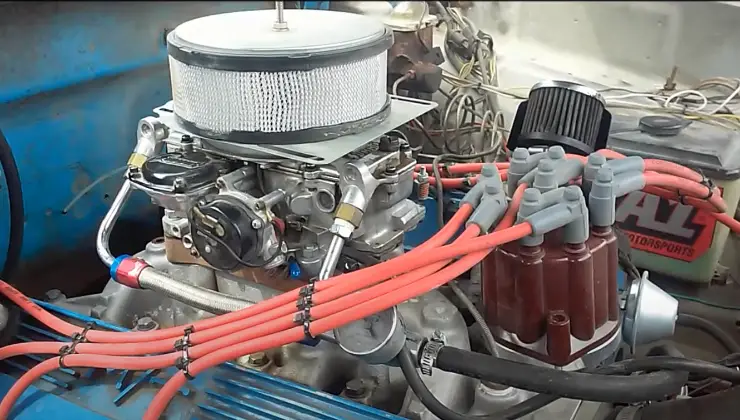If you’re a car enthusiast, you’ve probably heard of Holley carburetors. Holley carburetors are known for their reliability and performance, making them a popular choice for car enthusiasts and racers alike. However, just like any other mechanical component, Holley carburetors can experience issues over time.
One common problem that many Holley carburetor owners encounter is the vacuum secondary not opening. In this article, we’ll dive deeper into this issue and explore the symptoms, causes, and solutions for the Holley vacuum secondary not opening.
Contents
What is a Holley Vacuum Secondary?
Holley carburetors are popular among enthusiasts for their ability to deliver more power and improve throttle response. One of the key features of a Holley carburetor is its vacuum secondary.
How Does Holley Vacuum Secondary Work?
The Holley vacuum secondary is a component of a carburetor that regulates the air-fuel mixture going into an engine. It works by using the engine vacuum to control the secondary throttle plates. When the engine is idling or operating at low speeds, the vacuum is low, and the secondary throttle plates remain closed.
However, when the engine is under heavy load and demands more air-fuel mixture, the vacuum increases, and the secondary throttle plates open, allowing more air and fuel into the engine.
Signs of a Holley Vacuum Secondary Not Opening
When your Holley vacuum secondary isn’t opening, you may notice a few signs that indicate something is wrong. Some of the most common signs include:
Poor acceleration: If your car is slow to accelerate, it could be a sign that the vacuum secondary isn’t opening.
Hesitation: If your engine hesitates or stumbles when you press down on the accelerator, this could be a sign of a vacuum secondary problem.
High RPMs: If your car revs up to a high RPM but doesn’t accelerate, it could be a sign that the vacuum secondary isn’t opening.
Causes of a Holley Vacuum Secondary Not Opening
There are several reasons why your Holley vacuum secondary might not be opening. Here are a few of the most common causes:
Clogged passages: Dirt and debris can clog the vacuum passages in your carburetor, preventing the vacuum secondary from opening properly.
Vacuum leaks: If there’s a leak in your vacuum system, it can prevent the vacuum secondary from getting the signal it needs to open.
Weak spring: The spring that controls the vacuum secondary may be weak or worn, preventing it from opening properly.
How to Fix a Holley Vacuum Secondary Not Opening
If you’re experiencing problems with your Holley vacuum secondary, there are several things you can do to fix the problem.
Check for vacuum leaks: Start by checking your vacuum system for leaks. Look for cracked or damaged hoses, loose connections, and other signs of damage. If you find any leaks, replace or repair the affected parts.
Clean the carburetor: If your vacuum passages are clogged with dirt and debris, you’ll need to clean them out. Use a carburetor cleaner and a small brush to remove any buildup.
Adjust the spring tension: If the spring that controls the vacuum secondary is weak or worn, you may need to adjust the tension. You can do this by turning the adjustment screw on the carburetor.
Replace the spring: If the spring is damaged or worn out, you’ll need to replace it. You can find replacement springs at most auto parts stores or online.
Tips for Maintaining Your Holley Vacuum Secondary
To prevent problems with your Holley vacuum secondary, it’s important to maintain your carburetor properly. Here are a few tips to keep in mind:
- Regularly clean your carburetor to prevent buildup and clogs.
- Check your vacuum system for leaks and other damage.
- Replace worn or damaged parts as soon as possible.
- Keep your carburetor properly tuned for optimal performance.
Conclusion
The Holley vacuum secondary is an important component of a carburetor, and Holley vacuum Secondary not opening issues can lead to decreased engine performance. Understanding how the vacuum secondary works and troubleshooting common issues can help you keep your engine running smoothly. Regular maintenance and upgrades can also help you get the best performance out of your carburetor.
